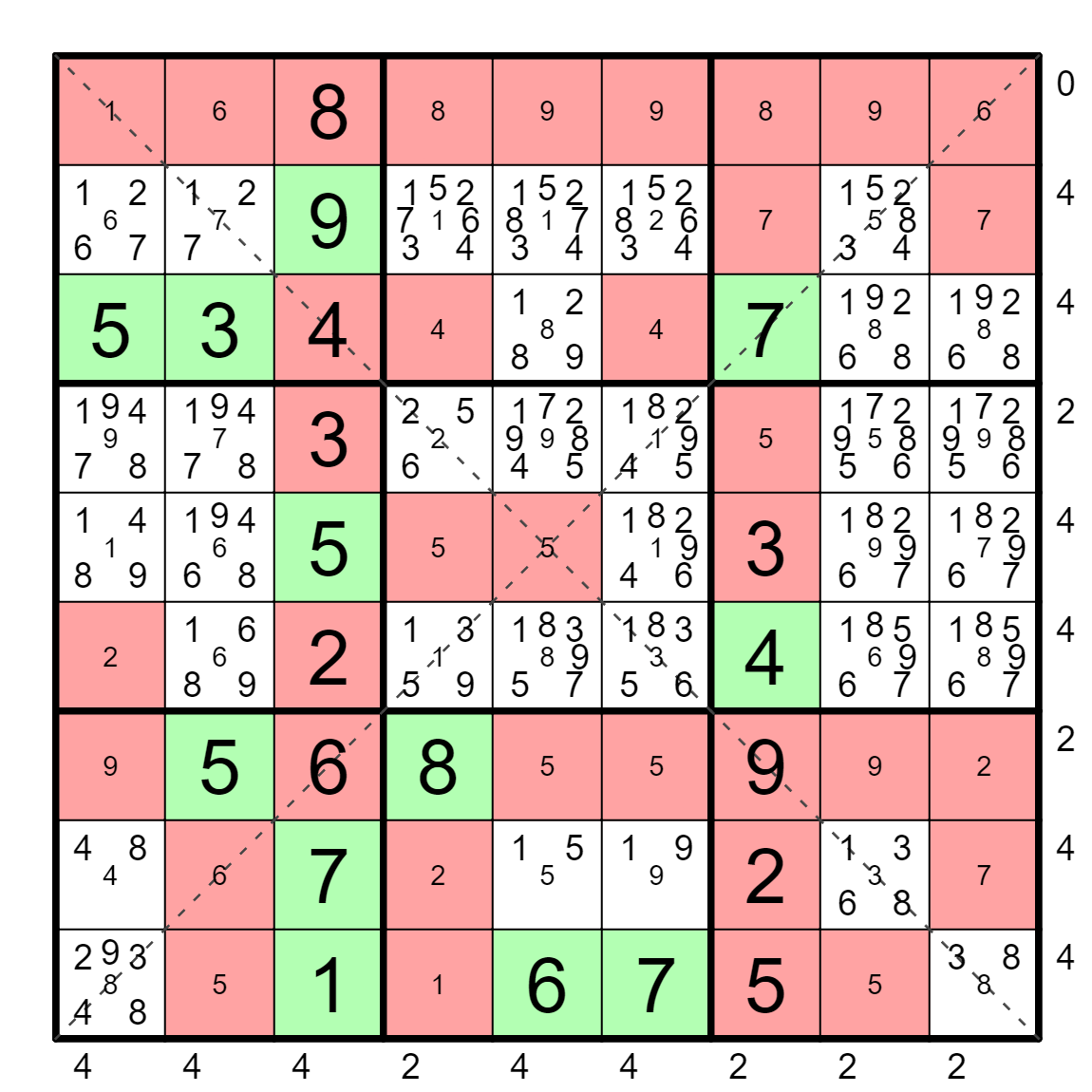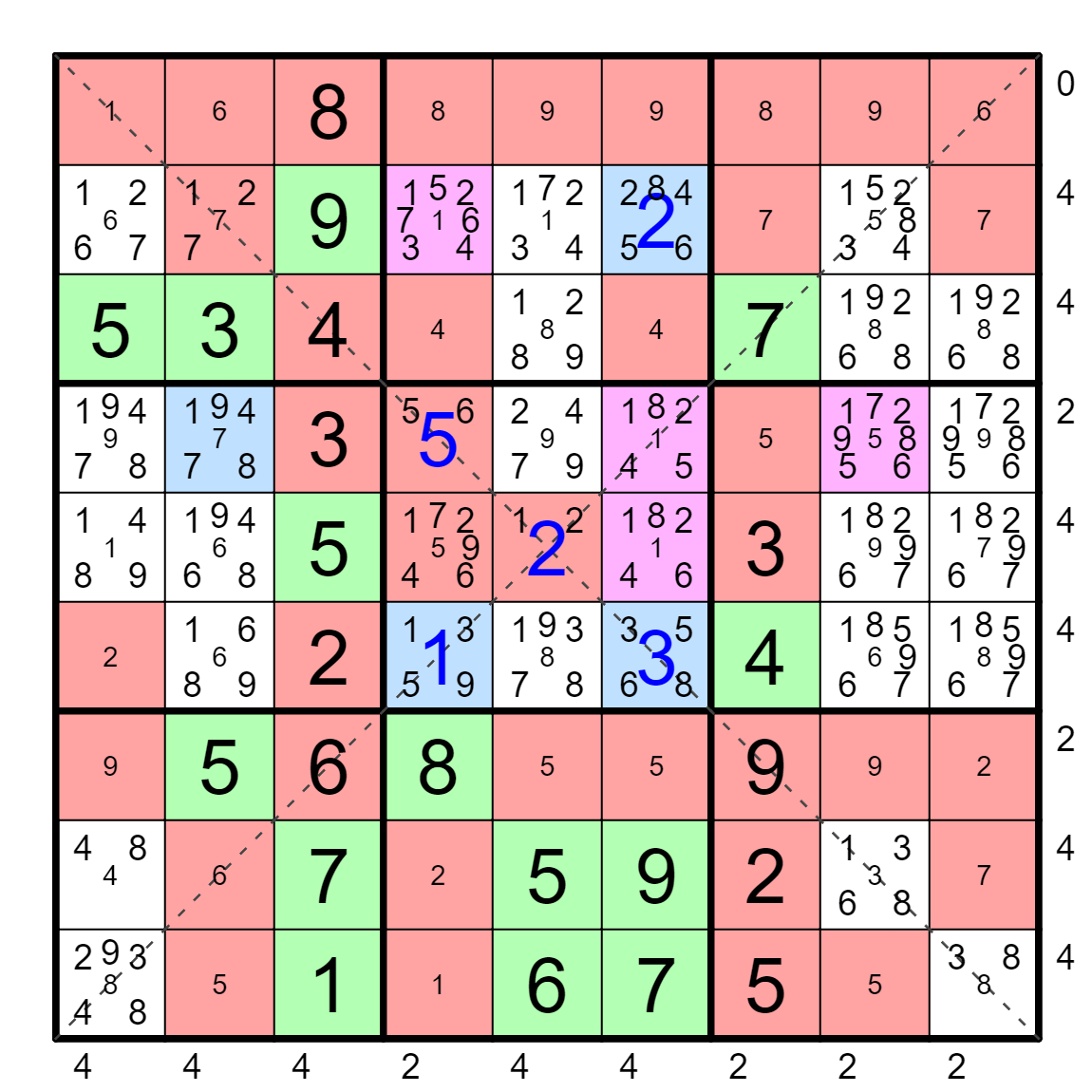The completed grid:

Now for the steps I took:

We start by the obvious, coloring numbers already in the grid, and coloring R1 in red. We can also propagate what we have by coloring red the ones that conflict.
R3 needs 4 matchs but there is three 8s, only one of them can match, meaning the remaining three other cells are forced to match regardless of which 8 match. Same reasoning can be then applied to C2, there is two 7s, three 6s and one 5. The column still needs 3 matchs so the 5 is forced to match. We can complete C3 and R7 for the colors, which give us C3 completely. Finally for this step, on R9 there is two 8s, one 6 and one 7 for three remaining matchs, so the 6 and 7 are green.

In R8, if any blank cell take the value of another blank cell, 2 reds are added and there is no way to get four matchs. We pencilmark every blank cell on the board applying that principle wherever possible, on C2 with the 6s and 7s, on C1R4 and C1R5 we can't put 6 otherwise C2 is blocked. On C4R4, we can't have a 7 as it would cover both R2 and R4 in C2. It can't be 1 either because of the two other 1s in C4

For the first inference chain, we say C5R8 is red, so 1. This turns C5R2 red too, and leaves two 8s and one 9 as blanks, for two remaining matchs, leading to a contradiction. So C5R8 is green 5. C6R8 has to be green 9 also, because otherwise C6 would be blocked. We can remove the 1s in the pencilmarking of C6 and 3 from the 2. On C5, we can remove the 8s in the pencilmarking and 9 from 1.

We remark that on C5R5, there can be either 1 or 2. We start an inference chain by setting C4R4 to green 2, turning the other cells in C4 red, and C5R5 to 1. This also turns C6R4 and C6R5. On C6 there is only two spots for two matchs, so they both turn blue, in particular C6R6 turns to green 3. This leaves no spot for a 5 in the diagonal, so we have a contradiction. So we know C4R4 is red. To finalize C4, we do another inference, by assuming C4R6 is green 1. This propagates to C6, forcing the 2 and 3 to be green, and C4R4 to be 5. That in turn make C8R4 red, leaving on R4 three 9s and one 7, so the 7 is green in C2R4 and the central cell to be 2.

And that's it. If you start from there the grid completes by itself using the basic sudoku logic and counting the matchs! Detailing every remaining cell would serve little to no point. I've included the number in the underlying grid in the corner to double check.







